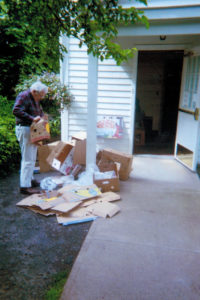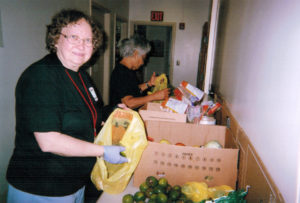Healing 2: Serving the Hungry with Reiki and an Understanding Heart

The food pantry community included massage therapists, Reiki practitioners and other healers in the line. At one point, I taught Reiki therapy to volunteers and attuned them to Reiki. Laren was among the students in the volunteer class.
Reiki is health care for the soul. The pantry could definitely use this jewel!
Reiki changes people’s lives and she was no exception. For most Reiki practitioners, the change is slow, subtle, gentle. Some aren’t even aware of anything happening.
I knew Laren’s response to Reiki was exceptional in the first fifteen minutes of the Reiki I class. She took the Reiki 2 class. She took the Reiki 3 class. Several months went by and she took one of my advanced classes.
Well, Laren could have taught that class hands down. Every subject I brought up was one she had experienced. Laren went on to become a Reiki Master Teacher and now attunes her own students.

Laren dropped by the pantry monthly and offered Reiki to the building. I felt the energy shift as she invoked the ChoKuRei, the SeiHeKi, and the HonShaZeShoNen in the pantry room and the hallway.
Laren offered Reiki to the building as people rushed around the hallway, bathroom, and the pantry room, cleaning everything after the pantry closed and before we had to leave the building. No one paid attention to Laren calling in the symbols as she walked around the rooms.
This was energetic healing at work.
She gave particular attention to the corners of the rooms. Reiki energy transformed the pantry into a holy space, erasing the toxic fear of hunger so prevalent in the hallway and the pantry room.
The floors, walls, corners, became holy.
Fear of hunger wasn’t the only issue. Fear of job loss, illness, and fear for the children were common in the pantry. Fear was often palpable.
Reiki therapy is a spiritual wand touching those around us who need blessings and healing.
Reiki practitioners know that when the time is right, Reiki takes on a life of its own, offering healing where it’s needed, using energy which passes through the practitioner’s hands.
Using Reiki, we align ourselves with our divine order to extend blessings.
When I am in the grocery line, or the traffic line, or on a sidewalk, or on a massage table, the space becomes holy when I invite Reiki in.
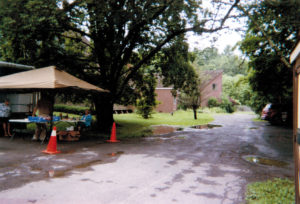
Reiki heals through chakra points located throughout the body. In a Reiki session, the recipient is reminded who she is. This self-awareness opens the chakra portals for the person to become who she can be.
The future blends with the present and the past at this moment. Possibilities open. This is a miraculous process.
Reiki is a holy ritual. It’s hard to get too much of this divine energy because Reiki is all-loving and all-giving. Reiki wisdom guides the practitioner’s hands during a session to the points of divine connection on the body. Reiki shows us the meaning of life and the teachings understand the sacredness of this process.
Reiki is a jewel not bound by earthly things.
No wonder there are no contraindications to Reiki therapy.
Reiki is a light touch applied to a clothed body. When offering Reiki therapy, I often began a session applying this light touch to the crown of my client’s head.
After three or four minutes, I moved my hands to the occipital ridge at the base of the skull.
There, I placed one hand on the base of the skull and the other hand on the back of the neck. After a few short minutes, I placed my hands on the person’s body, following the lines of the person’s chakras along the spine.
As I placed my hands on the recipient, healing energy traveled up and down the chakras, beginning at the head and ending on the feet. I felt warmth, tingling.
Sometimes I saw images and color while the recipient lay in a sleeplike state on a healing table. Whether or not the word “sleeping” was correct, the person was usually not conscious.
Chakras are the communication system of the body. Chakras share information with one another as they physically, intuitively, energetically, and psychically communicate with one another.
They also talk with chakras in other bodies as well. There is no limit to how chakras communicate.
The pantry visits themselves were healing because the pantry experience healed. When shoppers and volunteers healed from the experience, they saw things in new ways.
When this healing happened, it made the person new.
In this new inner life and outer life, the person moved forward in ways impossible before.
Pantry volunteers served shoppers, volunteers, hungry people.
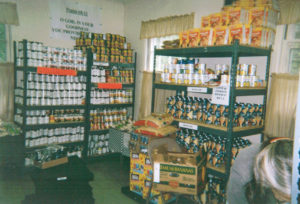
Distributing groceries all those afternoons in the pantry brought forgiveness and healing.
Fresh vegetables, eggs, and Bread Alone bread offered a healing experience with abundance. As volunteers fed the shoppers, they helped both themselves and each other. Did you want to be healed? Healing and feeding were connected.
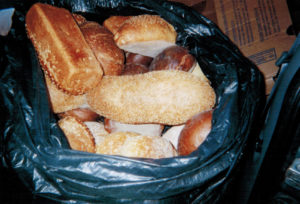
The pantry was a safe haven for everyone, both volunteers and shoppers. Healing began and continued as people shared food. This safe haven was necessary because the unspoken word here was the feeling that we were the wrong people.
Unspoken here was the feeling that one’s status in Woodstock could make things right. Without the right status, a person would never be acceptable.
Health issues pointed to a need to cope with spiritual challenges. Healing was on the agenda and getting well was something everyone sought.
In the end, healing was not easy. Before the trip was over and a person felt healed, she experienced many things: acceptance, belief, change, connection, forgiveness, laughter, persistence, and transcendence.
For me, this was amazing. How can a person in a pantry line experience connection? How can a person in a pantry forgive others? The path is simply too rocky.
For some, it was giving up anger, drugs, or a lifestyle that changed when the house was in foreclosure.
Giving and receiving food brought everyone a little peace.
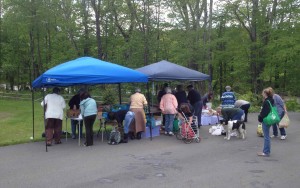
The whole experience was hard for people in the line who were unemployed, broken down psyhologically, economically, socially, spiritually, and physically,
As I watched healing in action, I saw patterns. First came forgiveness which made the healing easier. For sure, healing was harder when a person held a grudge.
The pantry visits themselves were healing. The pantry experience healed. When shoppers and volunteers healed from the experience, they saw things in new ways. This healing, made the person new.
In this new inner life and outer life the person moved forward in ways impossible before.
Thanks for reading this blog post. Please share it on your favorite social media network.
![]()
You can find a large selection of interviews on YouTube under:
Thurman Greco
Let’s Live
Take This Bread.
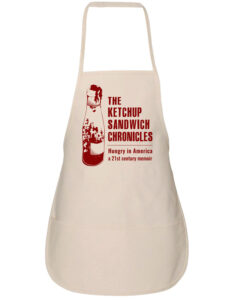
Hope you enjoy them!
Thurman Greco
After 30 Years of Service, Good Neighbor Food Pantry Closes June 1.


After feeding hungry people in Woodstock for over 30 years, volunteers at the Good Neighbor Food pantry were asked to leave the pantry’s space at the Woodstock Reformed Church by June 1, when the pantry will close..
This didn’t happen because there were no hungry people to use the pantry. This pantry has been one of the largest in the area since it expanded in the economic downfall of 2008. Before that time, shoppers were mostly a couple dozen single homeless men and Woodstock colorful characters.
With the economic downfall, patronage escalated from 25 people per week to hundreds. Hungry people filled the halls. The line filed out the door into the parking lot.
Before the economic downfall, people came in and got one or two each of four basic items: cereal, tuna fish, peanut butter, soup. About the time that the crowds began to shop for food, the food bank changed the system to include fresh produce and a three-day-supply of food for every person in the household.
People left the pantry with bags of food: eggs, vegetables, fruit, yogurt, items of dignity.
Church members and townspeople never really accepted these changes.
People resented the changes they didn’t ask for. This was understandable. No one likes change, especially uninvited change.
They liked feeling only a few people in town needed food.
They liked thinking the pantry was “theirs” when it really belonged to the Food Bank. After all, that’s where the food came from. That’s where volunteer training came from. That’s where food and rent grants originated.
With the changes in food served came training classes at the Food Bank. Funds became available to assist pantries with rent, and utilities. At that time, the volunteer coordinator applied for and received a $1,000 rent grant to pay the church annually.
The $1,000 rent grant was new for the Woodstock Reformed Church. No food pantry volunteers had paid rent money to help the membership.
At the time, the intention was to increase the amount annually. $8,000 was a long range goal.
$8,000 was not out of line if the refrigerators and freezers were moved from the unpainted barn in the parking lot to the church basement.
A nationally known fundraising guru, Kim Kline, taught interested nonprofit volunteers how to raise money. She based her success on the premise that givers give. She told everyone in the class exactly what to do.
After this class, pantry volunteers in Woodstock did exactly as she instructed.
These fundraising efforts at the pantry made the Good Neighbor Food Pantry a success story. Secrets of successful fundraising are outlined in detail on pages 196 and 197 of the book “I Don’t Hang Out in Churches Anymore.”
The Good Neighbor Food Pantry need not close. There is time to raise the money needed. There are probably still volunteers in this pantry who remember these skills taught by Kim Kline.
There is still time to feed the many hungry people who need this food. The need is greater now than it has ever been.
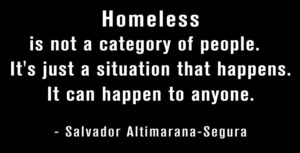
.
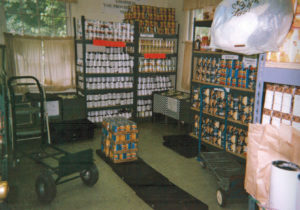
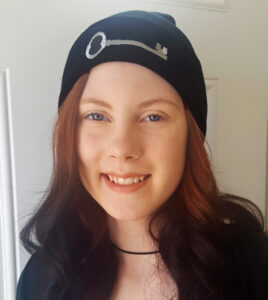
Thank you for reading this blog post. Please forward it to your preferred social media network. Share it with your friends.
Thank you for your interest in feeding hungry people. Our need is greater now than ever before.
Thurman Greco
Woodstock, New York
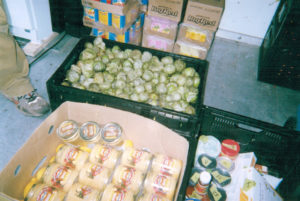

What Inspires me in the Fight Against Hunger
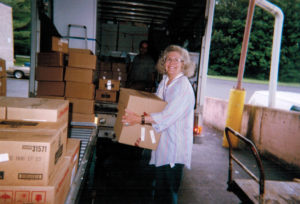

Well, actually, it isn’t necessarily what. It’s more likely who. The first line of leadership inspiration is the hungry people in the food pantry line. A food pantry really is all about the people grappling with hunger.
But, where did this whole thing actually begin? For me, it all started with Robert F. Kennedy. In 1967, he traveled to Mississippi to see poverty and hunger for what it was. Being a wealthy man from a wealthy family, he actually had no idea.
Down there he saw hunger and poverty for what it was, not what he thought it should be. He saw people, elderly people, adults, children. He saw people with no jobs, no welfare, no surplus commodities, and no food stamps.
If the history books tell this story correctly, it was the children who got to him. He saw the hunger as it was. Seeing children hungry to the point of near starvation, Robert F. Kennedy came face-to-face with malnutrition.
Robert F. Kennedy was both moved and angry.
There is a book out there telling the story of their hunger. You may or may not ever have heard about this book. “So Rich, So Poor” was written by Peter Edelman.
In reading about Robert F. Kennedy, I read a paragraph which has meaning for me:
“All of us, from the wealthiest to the young children that I have seen in this country, in this year, bloated by starvation – we all share one precious possession, and that is the name American.
“It is not easy to know what that means.
“But in part to be an American means to have been an outcast and a stranger, to have come to the exiles’ country, and to know that he who denies the outcast and stranger still amongst us, he also denies America.”
Those words resonate with me. They may mean nothing to you. But, whether or not they have meaning for you, they are powerful words and they tell a story I see in the food pantry line.
I thank you for reading this blog post. I thank you for your interest in fighting hunger. I know that distributing food in a food pantry is not going to do away with hunger.
But, this I do know: Distributing food in a food pantry will keep the shoppers in that line from starvation for three days.
This is all I can do. This has to be enough until a better option comes along.
Thurman Greco
Please refer this post to your preferred social media network.

